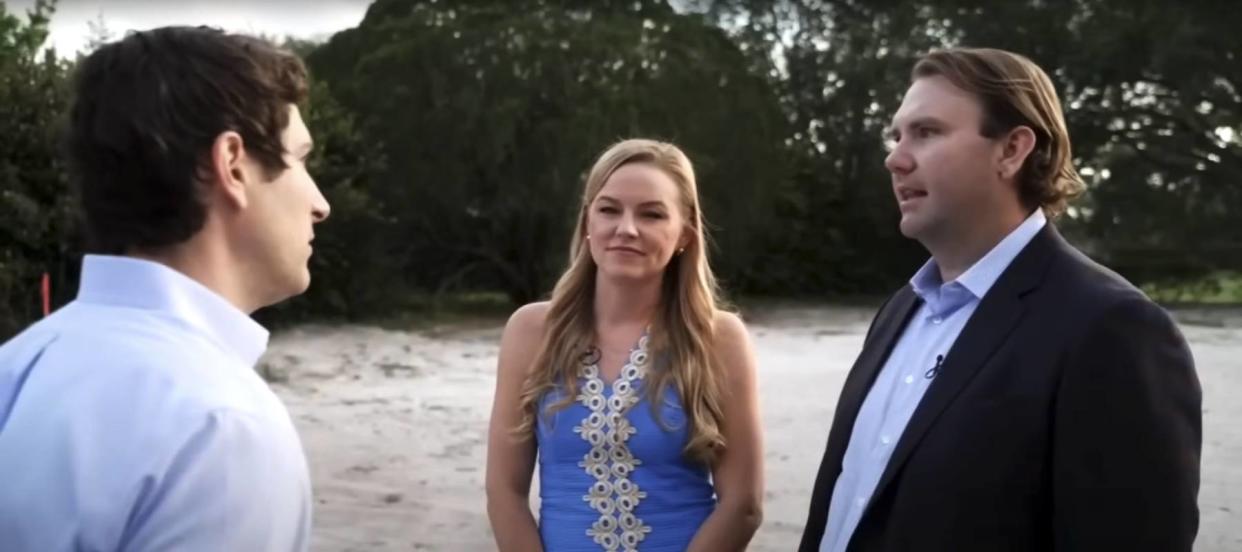'We don't want Coachella here all year long': Millennials flocking to golf communities has some retirees fuming — but here's why they better get used to it

Across the U.S., millennials have planted their flags around retirement golf communities and are taking over the links with all the peskiness of the “Caddyshack” gopher — at least as far as some retirees see it.
A report by NBC’s Today Show features two newlyweds, both 35, standing on a sizable vacant lot — the sight of their future home — that butts straight up against the Tequesta Country Club, north of West Palm Beach in Florida. It’s a quiet life Victoria Meadows Murphy and her husband, Evan, want, and so far, they say, they haven’t heard a peep from the locals.
Don't miss
Commercial real estate has beaten the stock market for 25 years — but only the super rich could buy in. Here's how even ordinary investors can become the landlord of Walmart, Whole Foods or Kroger
Cost-of-living in America is still out of control — use these 3 'real assets' to protect your wealth today, no matter what the US Fed does or says
These 5 magic money moves will boost you up America's net worth ladder in 2024 — and you can complete each step within minutes. Here's how
But that doesn’t mean they haven’t caught their attention. The trend of millennials parking their cars at country clubs may be new, but not every community is ready to adapt to the times. Here’s a snapshot of some of the changes happening around the nation’s links.
A 'full bore' movement
The Wall Street Journal spotlighted the trend in April with a headline to make baby boomers bury their heads in a sandtrap: “Millennials are coming for your golf communities.” In that story, Gabrielle and Brandon Sloan repeat the same refrain as the Murphys: They wanted to settle down someplace quiet and family-friendly. Both couples ended up buying property that borders the Tequesta Country Club.
Homes in these types of areas aren’t cheap, either. They tend to be in gated communities and often feature swimming pools and tennis courts, all wrapped in a bucolic setting. The Sloans paid $660,000 for their three-bedroom house, while the Journal describes similar properties in California, Georgia and Texas that attract millennials who are willing to pay upwards of millions of dollars.
One real estate agent in Texas described it to the paper as “a full-bore, ‘let’s get going on the country club lifestyle’ movement.”
The pandemic may be largely responsible. The National Golf Foundation (NGF) reports a surge in play over the past few years, with a record 531 million rounds of golf being played across the U.S. in 2023. The foundation credits favorable weather conditions and greater work flexibility as key contributors.
Read more: Jeff Bezos and Oprah Winfrey invest in this asset to keep their wealth safe — you may want to do the same in 2024
The potential backlash
While real estate professionals, the golfing industry and of course millennials are thrilled to be part of it all, the wave of newcomers hasn’t excited everyone. As Miami real estate agent Jordan Lederman told Today: “Some communities are adapting while others aren’t.”
In Southern California’s Coachella Valley, Doug and Jamie Baker told Today that they relish not having to deal with Halloween trick-or-treaters, for starters. But lately, they’re beginning to wonder whether the trick is on them.
“We don’t want Coachella here all year long,” Doug Baker groused, referring to the rowdy annual music festival hosted nearby.
Yet, if numbers call the tune, the Bakers and their retiree cohort will have to get used to the millennial swing toward golf-resort living. A substantial number of millennials moved to peripheral suburbs between 2011 and 2021, according to Harvard University’s Joint Center on Housing Studies.
The timing may also be just right. Millennials began turning 40 during the pandemic, and golfers tend to begin joining private clubs in their early 40s, Michael J. Timmerman of golf business intelligence firm Club Benchmarking told the Journal. Data from the NGF, cited by the Journal, also shows the number of private golf club members has increased since 2019 from around 1.5 million to 1.9 million, with adults 50 and under making up 60% of those memberships.
Yet the question remains whether millennials can afford the golf community life (or certain aspects) in the long run. Apart from the expensive real estate, club fees can run in the thousands of dollars, with some exclusive clubs requiring upfront initiation fees.
Meanwhile, millennials don’t exactly have a flood of resort homes to choose from, especially when you factor in boomers determined to hold onto their properties for as long as possible. Data from Redfin shows that 28% of all U.S. homes with three or more bedrooms are owned by empty-nest baby boomers — those who live alone or with just one person.
In other words, those stalwart boomers remain on top of the leaderboard.
What to read next
Car insurance premiums in America are through the roof — and only getting worse. But 5 minutes could have you paying as little as $29/month
Jeff Bezos, Mark Zuckerberg, and Jamie Dimon are selling out of US stocks in a big way — here's how to diversify into private real estate within minutes
'It's not taxed at all': Warren Buffett shares the 'best investment' you can make when battling rising costs — take advantage today
This article provides information only and should not be construed as advice. It is provided without warranty of any kind.
